#Louis Gottschalk
Text
During his venture into diplomacy, Lafayette declared, he had been guided chiefly by a single principle: he acted as he thought Washington wished him to act. 'I hope you will approve my conduct,' he wrote his 'adopted father,' 'and in every thing I do I first consider what your opinion would be had I an opportunity to consult it.' That rule of conduct had even become part of his family's code. Informing the revered leader that he hoped 'in the course of some months your God son will have a brother,' he added, 'My little family....are taught before all to revere and to love General Washington.'
Lafayette In America - The Close of the American Revolution - Franklin's Aide by Louis Gottschalk, pp. 371-372. FAN BOY, FAN BOY, FAN BOY
#marquis de lafayette#lafayette#gilbert du motier#george washington#lafayette in america#louis gottschalk#pp. 371-372
25 notes
·
View notes
Text
A Guide to La Fayette’s Papers: Code
La Fayette was never one to write too much in code, but we see two episodes during his life where he relied on partially encoding his messages. The first one was in 1782 when he had just returned to France and his letters to Washington had to make the long (and potentially dangerous) journey across the ocean. His last letter in America was written on December 21, 1781, just off Boston, and does not use any code. His first letter back in France was written on January 18, 1782, in L’Orient. Both letters contain words that he would translate into ciphers in later letters. The first coded letter to Washington was written on March 30, 1782.
In a third letter, written between January 18 and March 30, 1782, La Fayette wrote:
the Next time I write to Your Excellency it Will Be in Cyphers and More particular.
“To George Washington from Marie-Joseph-Paul-Yves-Roch-Gilbert du Motier, marquis de Lafayette, 30 January 1782,” Founders Online, National Archives, https://founders.archives.gov/documents/Washington/99-01-02-07755. [This is an Early Access document from The Papers of George Washington. It is not an authoritative final version.] (04/13/2024)
Most editors have translated La Fayette’s codes and printed the text as it should be read, either with the ciphers written next to it, or without it or any other mentioning that code was used in the letter. To make this list, I relied mainly on the book The Letters of Lafayette to Washington, 1777-1799, edited by Louis Gottschalk (second printing, edited and revised by Louis Gottschalk and Shirley A. Bill, 1971) because here the cipher as well as the translation are printed side by side and this saved me a lot of going back and forth. When reading La Fayette’s correspondence, you actually do not really need to know his code, because, as I said, he seldomly wrote in code and his editors already did the translation for us. BUT – maybe you desire a deeper understanding of his writings, maybe you find an unpublished letter somewhere in an archive that uses code, maybe you want to up your roleplay and sound more like La Fayette – or maybe code is just your thing! If any of this applies, this post is for you.
The code La Fayette and Washington used in 1782 looks as follows:

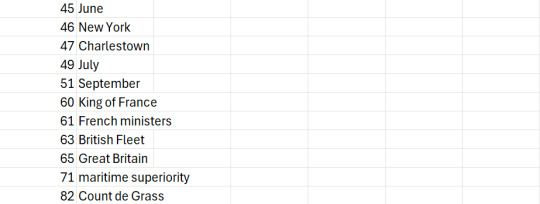
We see La Fayette rely on code a second time in 1785 when he was discussing matters of religious tolerance in France (a matter dear to his heart) with Washington. The ciphers employed this time were a little different:

#a guide to la fayettes papers#resources#marquis de lafayette#la fayette#french history#american history#history#letters#george washington#code#foundesr online#1782#1785#louis gottschalk#1781
16 notes
·
View notes
Text


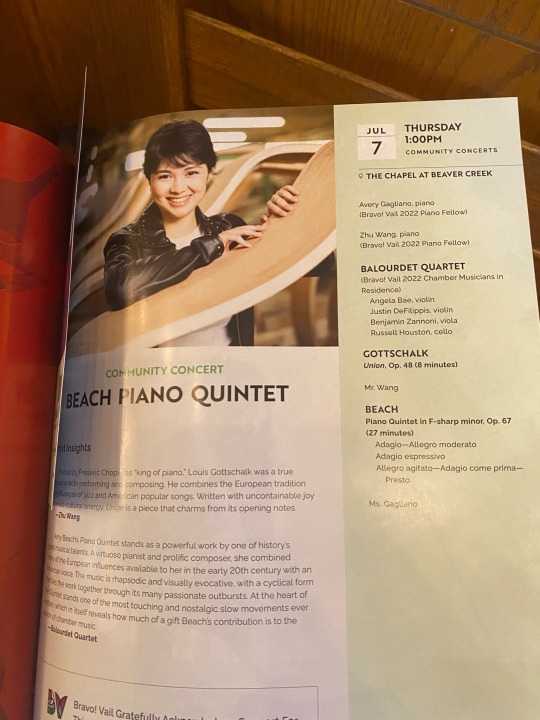
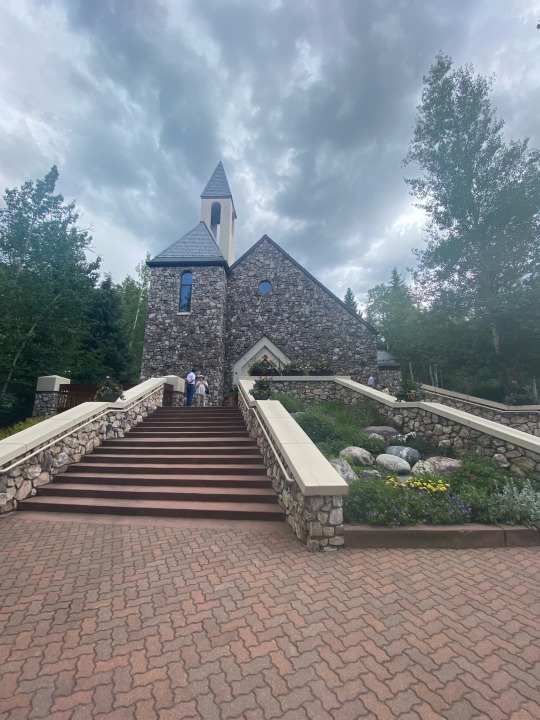

anyway had a great time listening to some chamber music at Bravo!Vail
#classical music#chamber music#notyouraveragejulie goes to the chamber music concert#bravo!vail#amy beach#louis gottschalk
5 notes
·
View notes
Text
youtube
Louis Moreau Gottschalk (1829-1869) - Marguerite-Grand Valse Brillante ·
Leonard Pennario, piano
3 notes
·
View notes
Photo

Bad movie I have Dr. Jekyll and Mr. Hyde 1920
#Dr. Jekyll and Mr. Hyde#Paramount#John Barrymore#Brandon Hurst#Martha Mansfield#Charles Lane#Cecil Clovelly#Nita Naldi#Louis Wolheim#Alma Aiken#J. Malcolm Dunn#Ferdinand Gottschalk#Julia Hurley#Jack McHugh#Georgie Drew Mendum#Blanche Ring#May Robson#George Stevens#Edgard Varèse
2 notes
·
View notes
Text
Bamboula
Louis Moreau Gottschalk (8 maggio 1829 - 1869): Bamboula, «danse des nègres» op. 2 (1844-45). Eugene List (1918 - 1985), pianoforte.
youtube
View On WordPress
0 notes
Text
Billy Connolly and the William Tell Overture
Today, we’ll be listening to the end of the William Tell Overture by Gioachino Rossini. This piece, originally the overture to an opera, has been arranged for piano and is in several method books, including Piano Pronto Movements 1 and 2. It’s also in Bastien Book 4 and Piano Maestro.
The original story
Maybe your grandparents watched the original Lone Ranger
Or you saw the newer Lone…

View On WordPress
#Bastien Book 4#Billy Connoly#cartoon#Daily Listening Assignment#Gioachino Rossini#Handbells#Johnny Depp#Lone Ranger#Louis Moreau Gottschalk#Mickey Mouse#opera#orchestra#piano maestro#Piano Pronto#pipe organ#Spike Jones#video#William Tell Overture
0 notes
Text
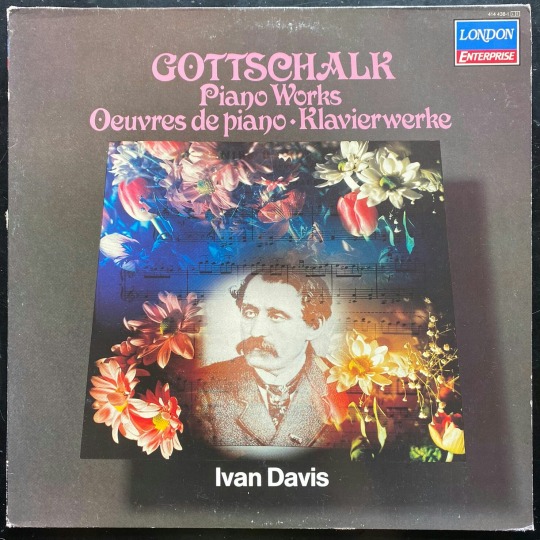

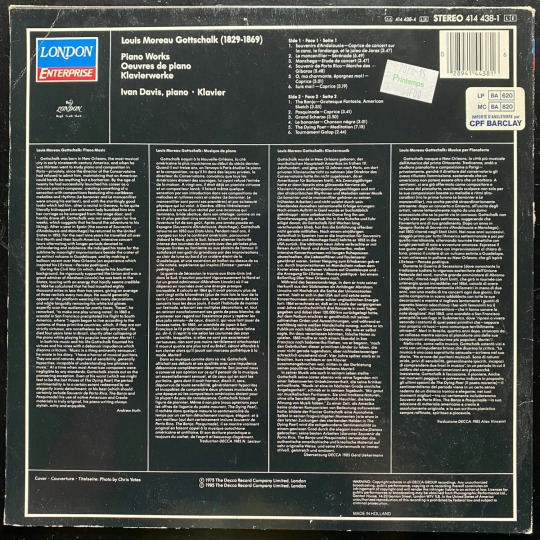
Louis Moreau GOTTSCHALK [p. Ivan DAVIS]
"Piano Works"
(LP. London Enterprise / Decca. 1985 / rec. 1975) [US]
youtube
1 note
·
View note
Note
what are the best sources/biographies you recommend for marat?
I think I’m gonna direct this to the Marat masterpost by @orpheusmori. I myself have read up so little on him I have yet to have any preferred biography/source. But below are at least all biographies avaliable for free I could find on Internet Archive:
Marat, l’Ami du Peuple (1865) by Alfred Bougerat
Jean-Paul Marat : esprit politique accompagné de sa vie scientifique, politique, et privée (1880) by François Chevremont, volume 1, volume 2
Marat inconnu: l’homme privé, le médecin, le savant, d’après des documents nouveaux et inédits(1881) by Augustin Cabanès
Jean Paul Marat: the People’s Friend (1901) by Ernest Belfort Bax
Jean Paul Marat: a study in radicalism (1966) by Louis Reichenthal Gottschalk
Marat by Jean Massin (1988)
People who know more can feel free to share which biography they think is the best.
10 notes
·
View notes
Note
Hi! What Lafayette biography would you recommend?
I've only skimmed through these, but they seem to be some of the best;
Lafayette In America by Louis Gottschalk.
Lafayette in America in 1824 and 1825 by Auguste Levasseur.
Adopted Son by David Clarybtends tends to be more of a narrative novel than a biography and I haven't gone through to fact check it but many others recommend it.
Also Lafayette by Harlow Giles Unger, and the Memoirs of General Lafayette.
#amrev#american history#frev#french history#marie joseph paul yves roch gilbert du motier marquis de lafayette#marquis de lafayette#queries#sincerely anonymous
50 notes
·
View notes
Note
different anon: what are your fave musician or music related autobiographies?
Questlove's Mo' Meta Blues
Patti Smith's Just Kids
Bob Dylan's Chronicles
Louis Moreau Gottschalk's Notes of a Pianist
#the first 3 memoirs are well-known but the gottschalk memoir is absolutely fucking INSANE. literally one of the Guys of All Time#literally a case of why isn't anyone talking about this#anonymous#assbox
9 notes
·
View notes
Text
None looked forward to his [Lafayette's] return with greater interest than George Washington. The affection of the two men had now become proverbial. French travelers in America considered it natural to speak to Washington of Lafayette as to a father of a son. One of Lafayette's friends, the Prince de Broglie, on arriving at Washington's headquarters, found that the stern soldier's face grew soft and wreathed in a kindly smile as they drank a toast to Lafayette.
Lafayette In America - The Close of the American Revolution - Franklin's Aide by Louis Gottschalk, pg. 363. WashingDad strikes again.
#marquis de lafayette#lafayette#gilbert du motier#george washington#victor de broglie#lafayette in america#louis gottschalk#pg. 363
25 notes
·
View notes
Note
Do you have any favorite books about Lafayette or recommendations for someone wanting to learn more about him but isn't ready to jump into primary sources?
Dear Anon,
thank you for the Ask. I get questions like these quite often and if you go through my posts, you can find different recommendations for different people/questions/topics/ levels of depth/etc. Since you do not seem to look for some incredible detailed analyses of some niche aspects of La Fayette’s live, we will focus on the more general books.
Here I can recommend Hero of two Worlds by Mike Duncan and Lafayette by Harlow Giles Unger. They are both good and comprehensive overviews about La Fayette’s life from cradle to grave. Unger has a few more information and Duncan gives better sources and is more neutral, if you were to ask me, but both books are good starting points.
Then there also the books written by Louis Gottschalk – he was and likely still is *the* authority on La Fayette. He published a multi-volume work detailing his life as well as numerous papers and books about smaller, more specific aspects. He was also one of the driving forces behind the publication of La Fayette’s letters and papers.
If you are looking for books that are still rather general and broad, but with a bit more focus on a special episode of La Fayette’s live/ a special topic, I can recommend For Liberty and Glory by James R. Gaines (one of my personal favourites), a book about La Fayette’s and Washington’s relationship, and their different approaches to Revolution. I can also recommend The Marquis – Lafayette Reconsidered by Laura Auricchio for new perspectives.
Lastly, even if you say that you are not quite ready to jump into primary sources, let put in a good word for primary sources. They can easily look a bit intimidating and overwhelming, especially when you are still looking for the best way to access and handle them – but they are also so much fun. I found La Fayette an interesting character when I started reading about him but in the end my enthusiasm was lackluster, he was one of many dead people I was reading about – taking a deep dive into more primary sources made a difference for me.
Anyway, I hope some of these books work well for you and happy reading! I hope you have/had a wonderful day!
#ask me anything#anon#marquis de lafayette#la fayette#french history#american history#history#american revolution#french revolution#books#resources#hero of two worlds#lafayette#for liberty and glory#louis gottschalk#the marquis lafayette recinsidered
8 notes
·
View notes
Text
DR. JEKYLL AND MR. HYDE (1920) – Episode 160 – Decades Of Horror: The Classic Era
“Damn It! I don’t like your tampering with the supernatural.” What if he just tinkers with it a bit? Join this episode’s Grue-Crew – Daphne Monary-Ernsdorff, Doc Rotten, and Jeff Mohr – as they make the Decades of Horror’s fourth encounter of a strange kind with Robert Louis Stevenson’s story as depicted in Paramount’s Dr. Jekyll and Mr. Hyde (1920).
Decades of Horror: The Classic Era
Episode 160 – Dr. Jekyll and Mr. Hyde (1920)
Join the Crew on the Gruesome Magazine YouTube channel!
Subscribe today! And click the alert to get notified of new content!
https://youtube.com/gruesomemagazine
ANNOUNCEMENT
Decades of Horror The Classic Era is partnering with THE CLASSIC SCI-FI MOVIE CHANNEL, THE CLASSIC HORROR MOVIE CHANNEL, and WICKED HORROR TV CHANNEL
Which all now include video episodes of The Classic Era!
Available on Roku, AppleTV, Amazon FireTV, AndroidTV, Online Website.
Across All OTT platforms, as well as mobile, tablet, and desktop.
https://classicscifichannel.com/; https://classichorrorchannel.com/; https://wickedhorrortv.com/
Dr. Henry Jekyll experiments with scientific means of revealing man’s hidden, dark side and releases a murderer from within himself.
Director: John S. Robertson
Writers: Robert Louis Stevenson (novella, 1886); Clara Beranger (scenario) (as Clara S. Beranger); Thomas Russell Sullivan (play) (uncredited)
Selected Cast:
John Barrymore as Dr. Henry Jekyll / Mr. Edward Hyde
Brandon Hurst as Sir George Carew
Martha Mansfield as Millicent Carew
Charles Lane as Dr. Lanyon
Cecil Clovelly as Edward Enfield
Nita Naldi as Miss Gina
Louis Wolheim as Music Hall Proprietor
Alma Aiken as Extra (uncredited)
J. Malcolm Dunn as John Utterson (uncredited)
Ferdinand Gottschalk as Old Man at table in music hall (uncredited)
Julia Hurley as Hyde’s Landlady with Lamp (uncredited)
Jack McHugh as Street Kid – Raises Fist to Mr. Hyde (uncredited)
Georgie Drew Mendum as Patron in music hall (uncredited)
Blanche Ring as Woman at table with old man in music hall (uncredited)
May Robson as Old woman outside of music hall (uncredited)
George Stevens as Poole – Jekyll’s Butler (uncredited)
Edgard Varèse as Policeman (uncredited)
The Classic Era Grue Crew takes in another silent scream with this 1920 version of Dr. Jekyll and Mr. Hyde, starring John Barrymore. The makeup-lite early versions of Hyde soon develop into something far more terrifying, augmented by Barrymore’s excellent acting and use of body language. Throw in a quality supporting cast and one of the freakiest dream sequences the crew’s ever seen, and you have a top-notch silent scream!
To check out the other Decades of Horror episodes focused on Stevenson’s novella check these out:
DR. JEKYLL AND MR. HYDE (1931) – Episode 122 – Decades of Horror: The Classic Era
DR. JEKYLL & SISTER HYDE (1971) – Episode 175 – Decades of Horror 1970s
THE STRANGE CASE OF DR. JEKYLL AND MR. HYDE (1968) – Episode 71 – Decades of Horror: The Classic Era
If silent films are your thing, check out these episodes of Decades of Horror: The Classic Era focused on silent screams:
THE CABINET OF DR. CALIGARI (1920) – Episode 13
NOSFERATU (1922) – Episode 21
THE PHANTOM OF THE OPERA (1925) – Episode 42
THE CAT AND THE CANARY (1927) – Episode 60
HÄXAN (1922) – Episode 79
PHANTOM CARRIAGE (1921) – Episode 85
THE GOLEM (1920) – Episode 99
FAUST (1926) – Episode 145
At the time of this writing, Dr. Jekyll and Mr. Hyde is available to stream from Tubi, Amazon Prime, Hoopla, Kanopy, Screambox, and Crackle. The film is also available as a DVD from multiple sources. Unfortunately, the Kino Classics Blu-ray is no longer available.
Gruesome Magazine’s Decades of Horror: The Classic Era records a new episode every two weeks. Up next in their very flexible schedule, as chosen by Doc, is The Alligator People (1959) featuring Lon Chaney Jr., effects makeup by Dick Smith and Ben Nye, and the cinematography of the legendary Karl Struss!! Put your hip-waders on for this trip; they’re going to the swamp!
Please let them know how they’re doing! They want to hear from you – the coolest, grooviest fans: leave them a message or leave a comment on the Gruesome Magazine YouTube channel, the site, or email the Decades of Horror: The Classic Era podcast hosts at [email protected]
To each of you from each of them, “Thank you so much for watching and listening!”
Check out this episode!
3 notes
·
View notes
Text
youtube
Louis Moreau Gottschalk (1829-1869) - Souvenir de Porto Rico, Marche des Gibaros
Artist: Michael Linville
Hot Springs Music Festival, Conductor: Richard Rosenberg
3 notes
·
View notes
Text
The Historian's Toolbox: How Sources and Technology Shape the Study of History

OBSERVATION
When I hear the term "history," depictions of past wars and historical figures who have long since passed away yet continue to hold a significant role in various cultures and societies come to mind. Growing up, teachers and elders in general taught me many aspects of history, but I never once questioned why they were doing so. For the sole purpose of learning more about history, I've read a ton of books, listened to the radio, and followed the news on television. I was encouraged to memorize those historical facts because I would find them valuable in social circumstances like a school, a mall, or even family reunions to appear intellectual and knowledgeable.
It wasn’t until a few years ago that I gained the consciousness to question myself if the sources for those historical facts were credible and still accurate after a lesson from one of my subjects in 11th grade. I vaguely remember my former research teacher talking about primary and secondary sources and how to tell them apart in order to make our research papers easier to write.
From my understanding, primary sources are direct information of the past and provide first-hand evidence of historical events. They include things like letters, diaries, government records, photographs, and artifacts. On the other hand, secondary sources are a retelling of primary sources or the kind of sources that did not witness historical events first-hand. Examples of secondary sources include history books, encyclopedias and research papers.

INSIGHT
Understanding History: A Primer of Historical Method (1969) by Louis Gottschalk gave me the insight that there is a difference between original and primary sources, despite having almost identical definitions. An original source refers to the earliest or most reliable source of information about a historical event or person, meaning that they are unpolished and the texts on manuscripts or documents are in their original language. As for the primary source, again, they allow researchers and historians to get a firm understanding of the past because the sources were directly involved or were created at the time of the historical event. But the more I think about it, the more I realize that an original source is always a primary source but not all primary sources are original sources.
For instance, if someone wants to learn more about the history of the Philippines, they should visit the National Museum and take a closer look at original sources like artifacts, antiquated photographs, and legal documents because these have been examined and are considered reliable sources by historians. However, they might be regarded as secondary sources rather than original ones if they were learning Philippine history from recently released textbooks.
Another insight I’ve learned from the reading materials is that history is dependent on how people communicate and the advancement of technology when it comes to sources according to Martha Howell and Walter Prevenier’s study From Reliable Sources: An Introduction to Historical Methods (2001). Before, people would walk for miles just to deliver news and information. It would also depend on the climate or geographic conditions of the area if the information would successfully reach its destination. As time went on, people resorted to using visual signals (flags) and sound signals (horns or drums) to communicate with one another. By 2000 B.C.E, they used pack animals as transportation for information. Then, Mesopotamians were able to put information on stone tablets when 3000 B.C.E rolled around.
It’s like how we look up information through the use of the internet nowadays in different mediums such as computers and mobile devices. Overall, communication and information technology have changed the way sources are created, stored, and shared, making them more accessible and easier to preserve, but also making it more challenging to ensure the authenticity and reliability of sources since it goes through a lot before reaching their destination.

SUMMARY
Despite all these insights and learnings, one thing is bothering me:
With how advanced technology is these days, almost anyone can fabricate information, manipulate photos, videos and even audio recordings. I wonder... how will they be able to tell apart factual sources from those made-up? Especially with the use of artificial intelligence on the rise, it's quite intimidating that they are able to replicate digital information with a few clicks and tricks of coding. And there are always people naive enough to believe them and spread them to garner even more attention.
Do historians have the technological means to determine whether or not the sources they have are original or just copies? I can only hope so.
To sum up my thoughts about this topic, I learned that historians go through a lot of labor to help us get a better understanding of history despite knowing that we will never be able to attain all information about the total past. It is only right that we acknowledge their efforts as they continue to pick apart and sift through portions of historical sources to put together historical facts, appropriately citing their works in our academic and professional publications, and generally supporting them in their attempts to provide a clearer picture of mankind's past. However, it's crucial to remember that honoring historians doesn't mean to worship them and take their every word as fact, but rather to recognize their significant contributions to society's knowledge and to our understanding of the past, present and potentially even future.

REFERENCES:
Gottschalk, Louis. Understanding History: A Primer of Historical Method. New York, Alfred A. Knopf, 1969
Howell, Martha, and Walter Prevenier. From Reliable Sources: An Introduction to Historical Methods. New York, Cornell University Press, 2001
3 notes
·
View notes